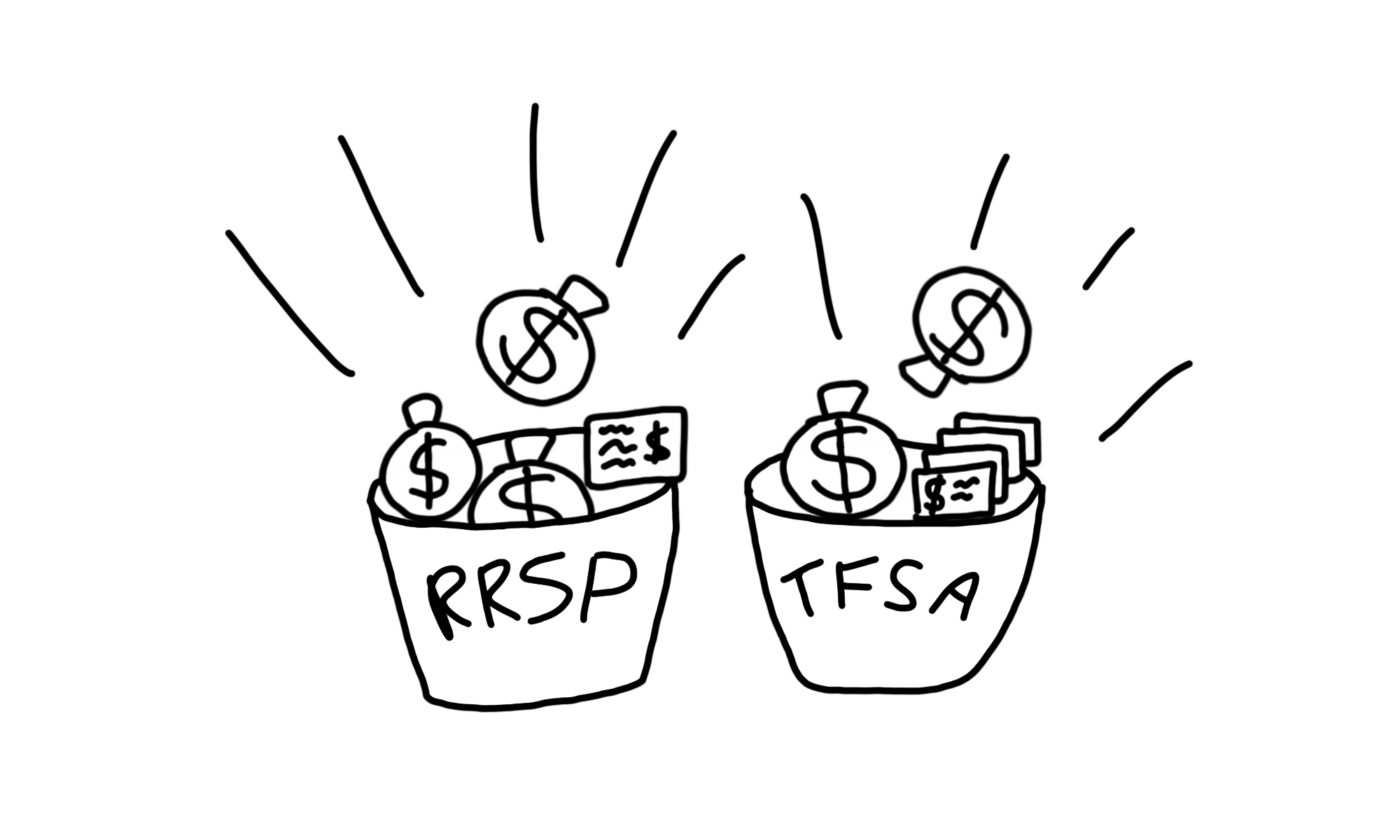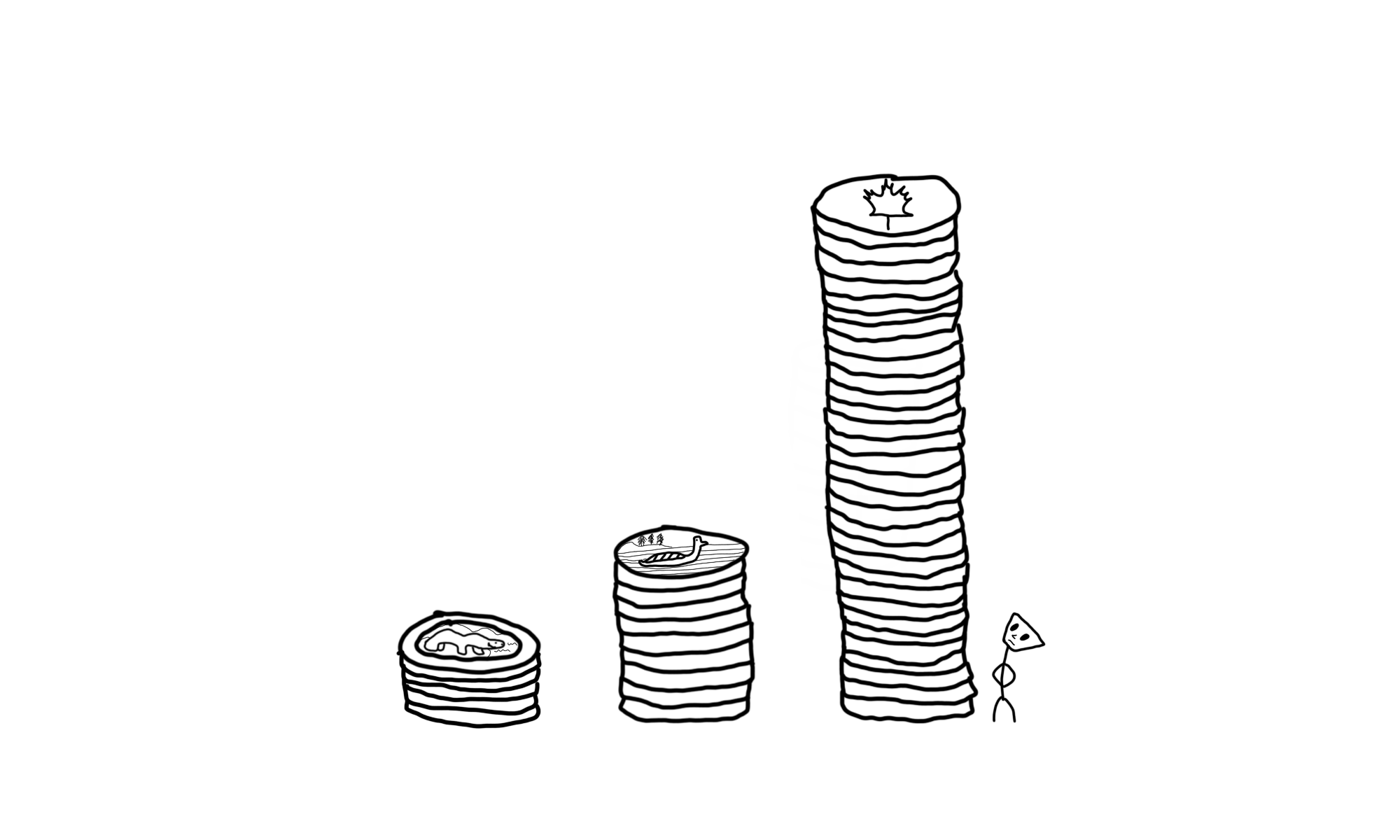Contents:
They’re financial accounts that hold money for you.
Money here can either mean cash or investments of some kind and that’s where some of the confusion around them can arise. That opening sentence specifically uses “accounts that hold money” instead of “accounts that hold savings” because while both can be used to hold cash (like a regular savings account), when used to their potential they hold investments and provide a shelter from or deferral of taxes – they’re tax-advantaged accounts.
Taxes on Income
Income is money that you receive for providing a good (selling something) or service (working your job) to another party (customer or your employer). Income in the investing world is money that you receive for providing your capital (money) to another party.
When you buy a share of a company’s stock you’re giving them your money to use to grow their business (this assumes you bought the share(s) when they had their IPO – buying shares from another investor via an exchange doesn’t give the company any money). By holding that share you become a part owner of the company and are entitled to a share of the profits should the company decide to distribute them to their shareholders – this is known as a dividend and counts as investment income.
Income tax is collected by the government in most countries and cannot be evaded (without serious legal ramifications). One exception to that rule is the TFSA (or the Roth IRA in the US), which allows the income generated from money inside the account to be tax-free (provided they are permitted investments) but whose contributions (money put into the account) are taxed as normal income.
Taxes are a part of life but the RRSP and TFSA are two ways of easing the burden.
RRSP
The Registered Retirement Savings Plan (RRSP) is an account meant to provide income in one’s retired years. To this end, a withholding tax (covered a little further down) is in place to dissuade people from withdrawing money from their RRSP before their retirement.
There are benefits to putting money in your RRSP though – it reduces your income tax for that year and may net you a tax refund when you file your return. This is because RRSP contributions affect your pre-tax or gross income even though you may contribute with money you’ve already paid tax on known as after-tax or net income (your paycheque from your employer is after-tax as they hold and remit income tax on your behalf). Let’s take a look at an example.
You work for SuperCo as a SuperEmployee and get paid $50,000 a year. For simplicity, let's assume that the total amount of income tax you pay (both provincial and federal) is 15% of your salary or $7,500 ($50,000 × 0.15) and no other deductions come from your pay. Your employer withholds this $7,500 to pay income tax on your behalf. That means if you get paid monthly, each pay will be about $3,541.67 ($42,500 after tax ÷ 12 months). With each pay you decide to put $700 in your RRSP, so at the end of the year you can claim $8,400 of RRSP contributions on your tax return.
When your tax software (or tax professional) calculates your return, they will take your total salary of $50,000 (your gross or pre-tax income), subtract the $8,400 in RRSP contributions you've made throughout the year, and use that amount ($41,600) as your total gross income. From here, the tax rate of 15% is applied and either the software or your professional will inform you that you actually owe $6,240 in taxes ($41,600 gross income × 0.15).
This is where the RRSP really pays off. You may have noticed that your employer already withheld money from your pay for income taxes in the amount of $7,500 but the tax calculation shows you actually only owe $6,240. What happens to that difference of $1,260 ($7,500 - $6,240)? That's your tax refund!
That’s the benefit of contributing to your RRSP, it reduces your gross income. The other benefit is that earnings from investments in your RRSP are tax deferred, meaning that you won’t pay taxes on the earnings when they’re paid to you but you will pay taxes on the amount of money you withdraw in retirement – the earnings get rolled into the total amount inside of your RRSP.
The RRSP has a major drawback though and that is withdrawals from it are taxed as income. This means that whether you withdraw money in retirement or before, you’ll have to pay income tax when you file your tax return and if you’re doing it before retirement, you’ll also have to pay a withholding tax based on the amount withdrawn:
| Amount Withdrawn | Withholding tax rate |
|---|---|
| Up to $5,000 | 10% (5% in Quebec) |
| $5,001 to $15,000 | 20% (10% in Quebec) |
| $15,000 and over | 30% (15% in Quebec) |
A withdrawal from your RRSP counts as income and you will be taxed more if the withholding tax rate above is less than your marginal tax rate (the tax rate you pay on your next dollar of income). Time for another example:
You still work for SuperCo and make a salary of $50,000 with a tax rate of 15% (for simplicity, assume that's also your marginal tax rate). You need to dip into your RRSP to cover an unexpected emergency of $2,300. Since the amount is less than $5,000 you'll only pay a withholding tax of 10% on it.
However, your marginal tax rate of 15% means that you'll also need to pay an additional 5% (15% marginal rate - 10% withholding rate) on the withdrawal. If you withdraw $2,300, you'll be paying $345 in taxes ($2,300 × 0.15) which only leaves you with $1,955.
To get the $2,300 you need for the repair, you need to withdraw a little over $2,700 to account for taxes payable: $2,706 × 0.15 = (approx.) $406 total taxes payable, then $2,706 - $406 = $2,300.
The RRSP is designed to provide you with money in your retirement. Withdrawing from it early will make you pay for it now (as seen above) and later (by limiting the growth potential of your investments in it).
TFSA
The Tax-Free Savings Account (TFSA) has a misleading name which makes people believe that it’s just another savings account like a high-interest savings account offered by most financial institutions. However, like the RRSP, it can be used to hold investments (stocks, bonds, etc.) instead of just cash.
The first awesome thing about the TFSA is that any money earned from investments (in the form of interest or dividends) are completely tax free – you don’t need to pay taxes when the earnings are paid into your account. The second awesome thing is that withdrawals from it are also completely tax free – you don’t report them as income on your tax return for that year.
The main drawback of the TFSA is that any contributions made to it are done so with after tax dollars (net income) – money that you have already paid income tax on. This is why you don’t report contributions on your tax return (unlike with the RRSP) and why you won’t get a refund like you would if you had contributed them to your RRSP instead.
Contributions
Both accounts have a limit to how much money you can put into them each year (contributions), known fittingly as the contribution limit. The TFSA has a fixed yearly amount that’s the same for everyone regardless of income level while the RRSP is calculated at 18% of your gross income up to a maximum set each year by the government.
If you don’t contribute enough to reach the limit each year, the remaining amount is “carried over” into the next year and will be added to the contribution limit of that new year. This carrying over of contribution limits will give you your total contribution room: how much you can contribute to either your RRSP or TFSA at this moment in time. Both of these amounts can be found on your tax assessment from the government or in your account on the MyCRA website.
On the flip side, over contributing to either one is possible and is subject to a penalty via taxes payable. For the RRSP, you’ll be charged a 1% tax on the excess contributions that go over your RRSP limit (found on your tax assessment) by $2,000. The TFSA charges a similar tax of 1% of the highest amount of excess contributions per month for every month the excess contribution stays in your TFSA.
An important distinction with TFSA contributions is that making a withdrawal will increase your contribution room by the same amount but not until January 1st of the next calendar year:
You have $10,000 in contribution room for your TFSA. In March you contribute $1,100, then another $700 in July, and finally $3,150 in November. Your available contribution room going into December is $5,050 ($10,000 - $1,100 - $700 - $3,150).
You then withdraw $2,275 to pay for a trip you wanted to take next year. Your contribution room on December 31st remains unchanged at $5,050 but the next day (January 1st), it increases by $2,275 to account for your withdrawal in December and now stands at $7,325 (not including any additional room added by the government for the new year).
Where to Contribute?
The answer to the question of where to contribute takes into account variables like your income level, whether you’ll need that money in the future before retirement (emergencies or otherwise), how much you think you’ll need to withdraw in retirement, and importantly, whether you’ve reached the contribution limit on either account. The following questions can help guide you but remember that these are broad simplifications that really only take into account one or two of the variables mentioned. Everyone’s situation is different so think through it carefully.
| Question | Yes | No |
|---|---|---|
| Do you think you’ll need this money before retirement? | TFSA | RRSP |
| Do you think you’ll withdraw less in a year of retirement than you currently earn now? (e.g. $50,000 withdrawn in retirement vs $75,000 salary now) | RRSP | TFSA |
| Are you currently in a high marginal tax bracket? (Is your salary very high?) | RRSP | TFSA |
Wherever you decide to contribute, make sure that you’re using the account to its full advantage by investing the contributions at a risk level that is appropriate for you.
TL;DR
They’re tax-advantaged financial accounts that hold your money which you can use to invest in many ways. The RRSP provides tax deferral (pay income tax on the money later when withdrawn) and a potential refund on your tax return while the TFSA provides tax-free growth of money held inside it (interest or dividends on investments) and no penalties on withdrawals. Using them to hold investments allows you to maximize the amount of money you keep through tax-free or tax-deferred earnings.
| Account | Benefit | Drawback |
|---|---|---|
| RRSP | - Usually yields a tax refund when contributing - Usually has a higher contribution limit per year (18% of income) |
- Tax must be paid on withdrawals (in retirement) - Penalties on withdrawals before a certain age (withholding tax and income tax payable) - Penalties for over contribution |
| TFSA | - Income earned inside it are tax free - No tax paid on withdrawals - No penalties on withdrawals |
- No tax refund when contributing - Penalties for over contributing - Usually has a lower contribution limit per year (set by the government; same for everyone) |
Categories
| personal-finance
Tags
| rrsp
| tfsa
| investing
| retirement




